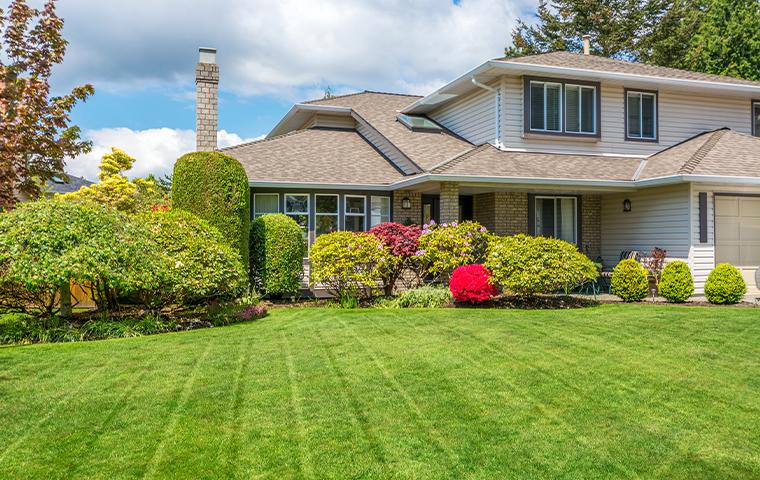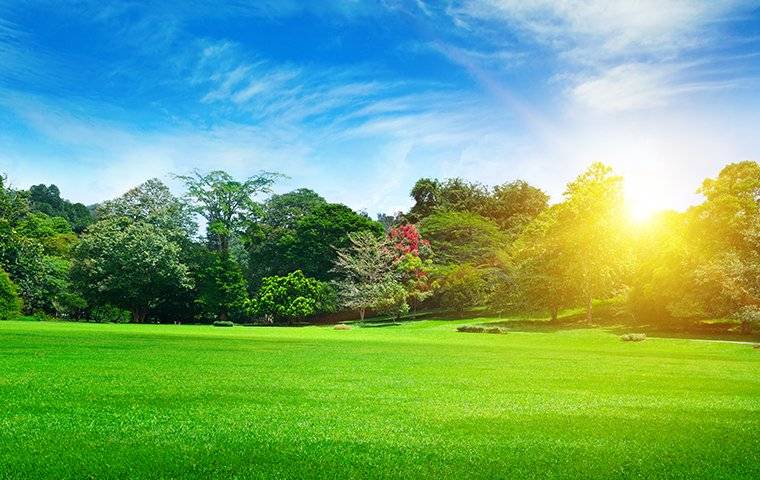A susceptibility shared by nearly every living thing on this planet, aside from the gift of life itself, is the vulnerability to experience sickness and disease. From the depths of the world’s oceans to the trees budding in the yard of your Arlington-area home, the long-term effects of disease are undoubtedly problematic for people, animals, and vegetation alike. For homeowners, renters, and landlords, persisting tree disease can pose a devastating outcome for your lawn, spreading to nearby trees, muting the once-sumptuous and healthy appearance of leaves, and eventually killing a tree’s branches and limbs - and ultimately the entire tree. We can help you with all your tree and lawn care needs.

Tree diseases most common in the Arlington area include oak wilt, hypoxylon canker, and bacterial leaf scorch, with fire blight and pest infestation posing additional concerns. Disease is primarily spread through open wounds in the bark exposed to bacteria, which invades the tree and causes it to rot over time. Diseased trees attract and serve as a breeding ground for insects, which can cause or add to an existing pest problem. Being able to spot the signs of tree disease is crucial to sustaining the long-term health of your plants and allowing these trees a fair chance to recover.
Telltale Signs Of Tree Disease
The trees most common in the Arlington area are sugarberry, post oak, and cedar elm trees. Below is a description of the most common diseases they face and signs to look out for.
Oak Wilt
Oak wilt is a fungal disease that attacks a tree’s vascular system and spreads from small sap beetles carrying bacteria from other infected trees. Over time, oak wilt affects a tree’s root grafts, allowing it to spread to surrounding trees of the same species. Signs of oak wilt include:
- browning leaves at the treetop
- leaves that appear browned at the borders and down the center and stem
- yellowing and browning branches
- heavier leaf fall and dead leaf accumulation
- fungal mat growth underneath bark, which causes cracking and attracts sap beetles
Hypoxylon Canker
Hypoxylon canker is a disease that affects trees exposed to harsh environments or weather conditions. It presents as cankers that develop underneath the bark and cause the bark to appear white as it decays and rots. Unfortunately, once hypoxylon canker is obvious, it is usually too late to save the tree; however, the tree can pose a hazard as branches, limbs, and the tree itself can potentially fall onto surrounding structures. Signs of hypoxylon canker include:
- yellowing and browning leaves
- growth of smaller leaves and twigs
- a thinning tree canopy
- presence of dead branches and limbs
- water sprouts (epicormic shoots) that grow on trunks and large limbs
- white and stringy sapwood in cankered areas
- dieback of feeder roots
Bacterial Leaf Scorch
Bacterial leaf scorch also affects a tree’s vascular system and is caused by bacteria spread by small insects that feed on this bacteria and land on surrounding trees. This disease will slowly envelop and kill the tree in time, usually over the course of a decade or so. Here are a few signs of bacterial leaf scorch:
- browning of lead borders which include a yellow, orange or red halo, giving it a “scorched” appearance
- presence of dead branches and tree limbs
- Fire blight occurs when a tree suffers wounds from harsh weather conditions like wind, rain, or hail. These open wounds make the tree susceptible to bacteria and cause leaves to have a “scorched” appearance, though with dead and blackened leaves.
Partner With The Experts At Trees Hurt Too, Inc.
Trees are assets on your property. They provide shade, habitat for wildlife, and a calming aesthetic. If you notice any issues with trees on your property, contact the tree professionals at Trees Hurt Too, Inc. We will inspect the problem and develop a tree care plan to help protect your trees from disease. Reach out to us today to learn more about our Arlington lawn and tree services.



